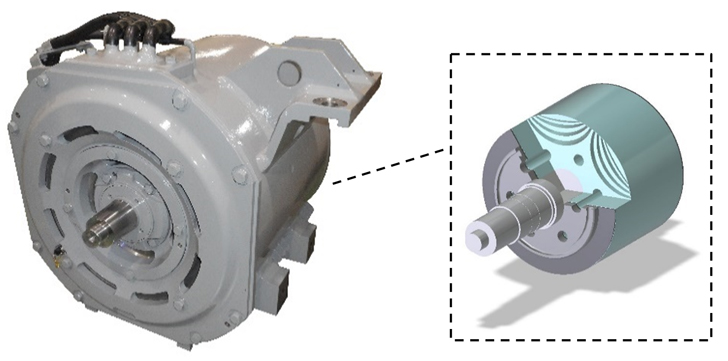
Synchronous reluctance motor (SynRM) developed this time, and rotor image inside the motor
Mitsubishi Electric: High-efficiency synchronous reluctance motor (SynRM): For railway vehicles
Mitsubishi Electric:
Achieved the world’s largest output for railway vehicles.
High-efficiency synchronous reluctance motor (SynRM * 1) and
Inverter control technology for variable speed control,
It was developed for the first time in the world.
Reluctance motor (SynRM * 1):
At SynRM, we have succeeded in demonstrating a high-output, variable-speed drive with a maximum output of 450 kW, which is one of the largest in the world.
In the future, by applying these development results to our products, we will contribute to further energy saving of railway vehicles.
* 1 What is Synchronous Reluctance Motor:
A “motor that generates torque” by “interaction between the rotating magnetic field of the stator and the magnetic pole generated by the difference in magnetic resistance in the rotor core”.
Development overview:
We have developed SynRM for railway vehicles, which has the world’s largest output and high efficiency, using our unique electromagnetic field analysis technology.
We utilize our original electromagnetic field analysis technology.
1. SynRM with a maximum output of 450kW class
Optimized rotor core structure inside the motor.
We have developed SynRM for railway vehicles with a maximum output of 450kW class (rated 200kW class).
Succeeded in reducing loss by 50% compared to existing high-efficiency induction motors.
SynRM high torque,
Taking advantage of high efficiency characteristics in the medium and high speed range,
Succeeded in highly efficient operation in a wide speed range.
2. Realization of variable speed torque control
Developed the optimum inverter control technology for SynRM for railway vehicles and realized variable speed torque control
By developing the optimum inverter control technology for the newly developed SynRM, the variable speed torque control of SynRM is realized.
We were able to demonstrate that stable output can be obtained up to 450 kW.
the next deployment:
It will be installed on a test vehicle of Tokyo Metro Co., Ltd.
From March 2021, performance evaluation will be conducted in the night driving test.